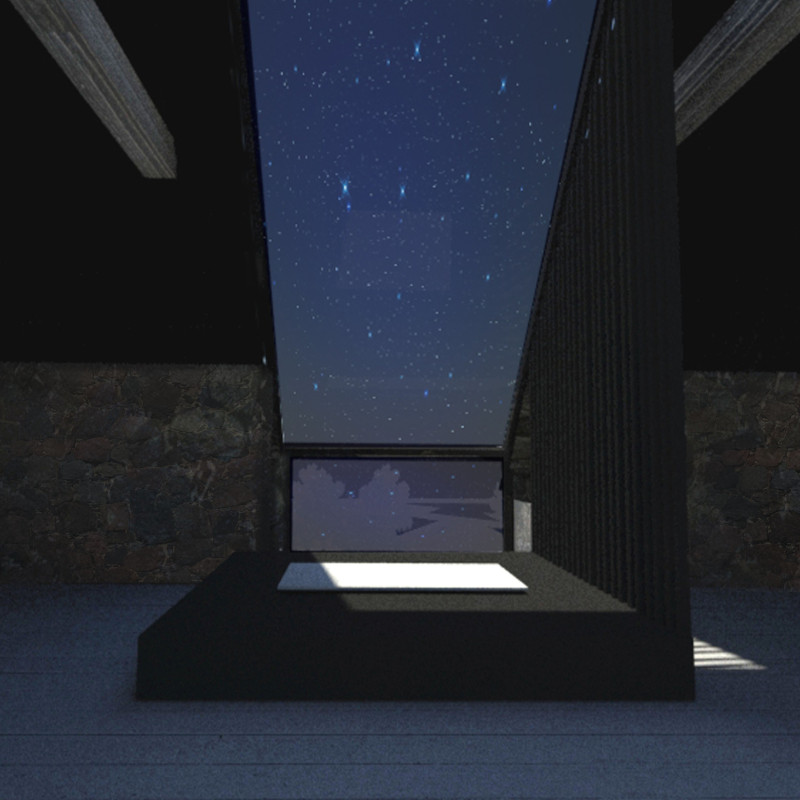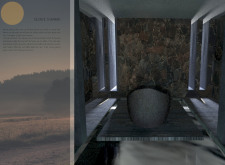5 key facts about this project
### Overview
The Stone Barn Meditation Camp is situated in a tranquil riverside setting in Latvia, designed as a retreat for self-reflection and meditation. Its intent is to foster mental well-being by establishing a strong connection between architecture and the natural environment. By utilizing ecological materials, the design aims to create spaces that promote tranquility and contemplation.
### Spatial Organization
The camp features a series of interconnected spaces that cater to various aspects of meditation and group engagement. Key areas include flexible meditation spaces, which incorporate expansive openings to facilitate both guided and individual practices. The layout encourages movement and exploration while directing visitors toward intimate corners for personal reflection. Additionally, a designated silence chamber, characterized by minimalistic finishes and ambient lighting, provides a sanctuary for solitude and deep relaxation. Communal dining and gathering areas are designed with an open-plan approach, fostering interaction and a sense of community among guests while maintaining visual connectivity with outdoor surroundings.
### Material Selection and Sustainability
Materials selected for the project reflect both aesthetic values and functional capabilities. Wood serves as a primary structural component, chosen for its warmth and insulation properties, fostering a sense of comfort. Stone is utilized for both foundational and decorative purposes, ensuring durability and visual coherence with the landscape while supporting local sourcing principles. Large expanses of glass in windows and skylights enhance transparency, allowing natural light to permeate interior spaces and continually adjust the atmosphere throughout the day.
The design integrates local architectural elements reminiscent of traditional Latvian barns, adapted for contemporary use. By emphasizing the use of sustainably sourced materials and optimizing natural light and airflow, the project minimizes energy consumption while fostering a genuine connection with the surrounding environment.






















































